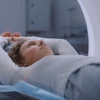Diverticular disease, an unfortunate result of low-fiber Western diets that increases in incidence with age to burden most of the elderly population, has a friend in virtual colonoscopy. That's because VC generally provides an easier colon exam for both patient and provider than conventional colonoscopy.
That said, virtual colonoscopy (also known as CT colonography or CTC) images are poorer in individuals with diverticular disease, who exhibit more wall thickening and collapsed segments than others. As a result, the virtual exam can be more difficult to perform and interpret, particularly the supine data.
In a study presented earlier this month at the 2010 European Congress of Radiology (ECR) in Vienna, Austria, researchers examined the mechanics and results of screening these individuals with VC, including any difficulties associated with VC screening that might impact the assessment of colonic pathology.
"In the majority of patients, diverticular disease is asymptomatic, and, in fact, 50% of the cases develop complications such as diverticulosis," said Dr. Francesca Cerri from the University of Pisa in Italy. "Due to the fact that diverticular disease is often asymptomatic, diagnosis is frequently performed in the context of a colorectal cancer screening program, that until recently was performed using double-contrast barium enema or conventional colonoscopy."
Recently, however, VC has gained favor for colorectal cancer screening in patients with diverticular disease -- who constitute a hefty percentage of individuals of screening age. And now that the American Cancer Society (ACS) has endorsed VC, it's time to take a look at its performance in this screening subgroup, she said.
"The aim of this study was to assess the degree of wall thickening and colonic collapse in patients with diverticular disease, and to evaluate the impact of diverticular disease on the assessment of colonic pathology," Cerri said.
The study retrospectively reviewed images of 71 patients who had undergone CTC in a screening program. All underwent a low-dose VC protocol in prone and supine positions following same-day fluid tagging.
Patients received 20 mg joscine-N-bromide (Buscopan, Boehringer Ingelheim, Ingelheim, Germany) immediately before colonic insufflation with CO2. Two radiologists evaluated the datasets in consensus using OsiriX 3.5.2 (OsiriX, Geneva) open-source software.
For each case, the degree of diverticular involvement was rated as mild (< 5 diverticula), moderate (5-10 diverticula), or severe (> 11 diverticula). Colonic wall collapse was expressed semiquantitatively as mild (most or all mucosal redundancy effaced), moderate (minimal wall separation or mucosal flattening), or severe (poor colonic distention).
The results revealed the degree of diverticular involvement:
- Mild -- 15 of 51 patients (29.4%)
- Moderate -- 25 of 51 patients (49.0%)
- Severe -- 11 of 51 patients (21.6%)
Meanwhile, wall collapse was higher in patients with diverticular disease than in the control group, Cerri said (mean ± standard deviation: 1.84 ± 0.70 versus 0.95 ± 1.10, p = 0.0037). In patients with diverticular disease colonic wall thickening, the mean was 1.92 ± 0.72 mm.
In patients with diverticular disease, wall thickening was also more pronounced, measuring 1.92 ± 0.72 mm in this group. On a scale of one to five, with five being optimal, diagnostic image quality was significantly higher in the prone versus supine acquisitions (2.59 ± 1.36 versus 2.18 ± 1.44, p = 0.0039), unlike in control subjects (p = 0.3142).
"In 53% of patients, the presence of colonic collapse was moderate. Only 18% of patients presented with severe colonic wall collapse," Cerri said. "In the control group, only 5% of patients presented with severe collapse, and in the majority of patients the colonic wall was well distended. Wall thickening increased with the severity of diverticular involvement."
The severity of diverticular disease correlated with both the degree of collapse (rs = 0.6780, p < 0.0001) and the degree of wall thickening (rs = 0.3513, p = 0.0115), she reported.
Moreover, the severity of diverticular disease, wall collapse, and wall thickening were inversely correlated with diagnostic quality in both the supine and prone positions (p < 0.01). "The assessment of colonic pathology was significantly better in prone [versus] supine position," Cerri said.
"The diverticular disease is associated with colonic wall collapse and thickening that can impair assessment of CTC images," she said. "And in patients with diverticular disease, the CTC data acquisition is significantly better in prone rather than supine position."
In response to a moderator's question, Cerri said that in her experience, CO2 provides better distension than room air for patients with diverticular disease. Cerri's co-investigator Dr. Emanuele Neri added that use of Buscopan before scanning is also key to optimal preparation of patients with known or suspected diverticular disease.
By Eric Barnes
AuntMinnie.com staff writer
March 26, 2010
Related Reading
Study reveals lesions most likely to be dismissed by VC CAD, January 14, 2010
VC excels at diverticulosis staging, September 28, 2009
Virtual colonoscopy CAD improves flat-lesion detection, June 5, 2009
Rare venous malformations look like polyps on VC, April 12, 2006
Diverticular disease doesn't impede VC in Wisconsin study, November 28, 2005
Copyright © 2010 AuntMinnie.com

















